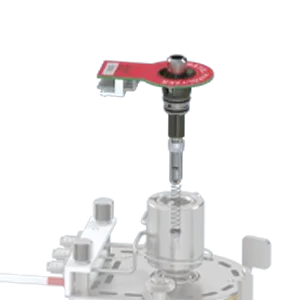
Pyrolysis
Pyrolysis gas chromatography, the technique used to generate small molecules
Pyrolysis gas chromatography GC is chemical analysis method in which the sample is heated until it decomposes, thereby generating smaller molecules which are subsequently separated by means of gas chromatography and detected by means of mass spectrometry (MS). The temperature used during pyrolysis can be as high as 1000 °C. During that process, large molecules are split at their weakest points, thereby creating smaller, more volatile fragments. Pyrolysis GC chromatograms are generally complex, as a large quantity of different decomposition products are formed. Examples of the products that are characterized include polymeric materials, due to the fact that the characteristic decomposition products can be used in order to draw conclusions about the composition of the polymer. Thermal decomposition processes can also be examined during temperature-resolved analysis.
When performing pyrolysis using equipment manufactured by GERSTEL, the samples to be examined are placed in pyrolysis vessels suitable for the type of sample involved. The pyrolysis products released at pyrolysis temperatures of 350 °C - 1000 °C are then transferred to the gas chromatography (GC) column. Aside from pulsed pyrolysis, in which the sample is heated up to the end temperature at the maximum speed possible, pyrolysis can also be performed in accordance with a temperature program at heating rates of between 0.02 and 100 °C/min. A range of additional pyrolysis techniques can also be used, depending on the analytical requirements. All steps are performed using the GERSTEL MultiPurposeSampler (MPS) and are fully automated.
Optionally, pyrolysis can be combined with a thermal desorption step.
Products for Your Pyrolysis Gas Chromatography

Pyrolysis option for TDU

